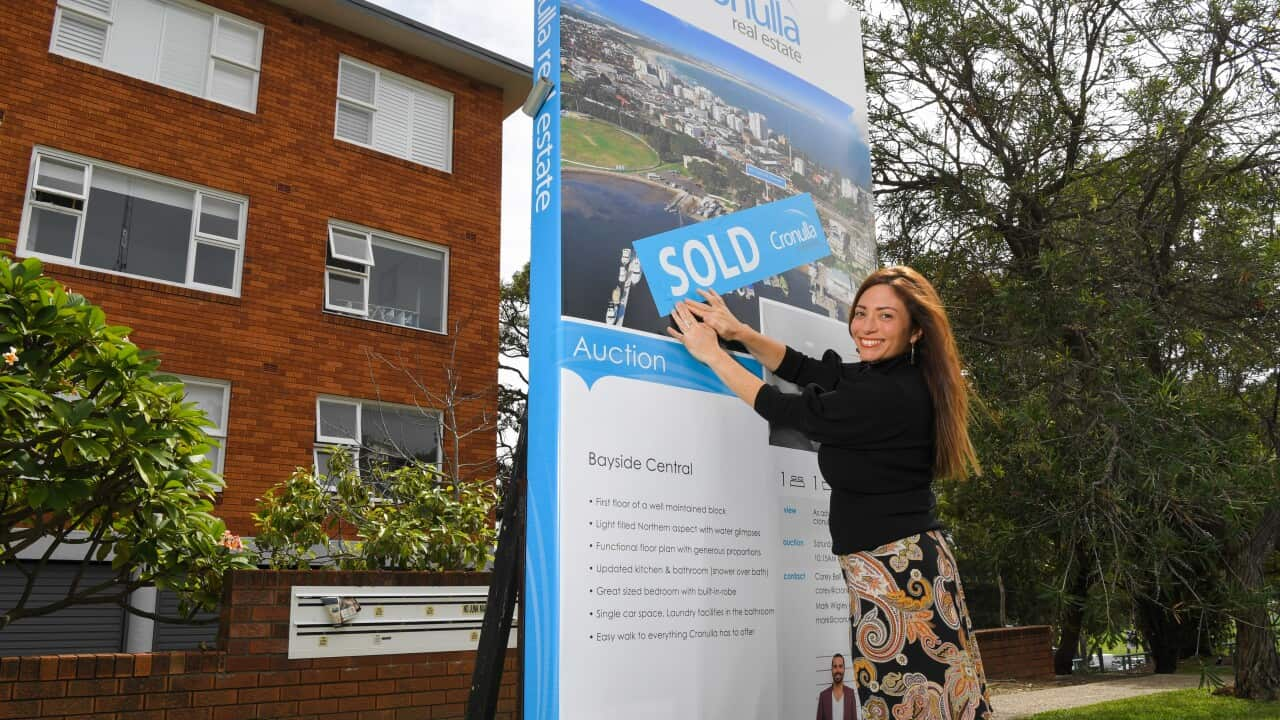Key Points
- Property data firm PEXA said about 25 per cent of all sales in eastern states were made without a mortgage in 2022.
- The data suggested most cash buyers were older homeowners who were buying a home to retire in.
- PEXA head of research Mike Gill said the findings had implications for the RBA in its fight against high inflation.
More than a quarter of homes were bought without a mortgage last year, suggesting there's a sizeable cohort insulated from aggressive interest rate rises.
Roughly 25 per cent of all sales in the eastern states - both dwellings and land - were made without a mortgage, according to property data firm PEXA.
The analysis suggests the proportion of cash purchases has stayed relatively stable since before the arrival of COVID-19 but the total value has been trending higher since the pandemic property boom.
About $122.5 billion worth of homes were cash funded in 2022, making up 25.6 per cent of all residential sales in NSW, Queensland and Victoria.
This was slightly less than the $124.8 billion worth of housing exchanged without a home loan in 2021 but well above the $83.6 billion recorded in 2020.

The bulk of the cash purchases were in regions popular with retirees, the study found, and in postcodes where the median dwelling price was well below state averages.
Mr Gill said the findings had implications for the Reserve Bank .
"Given these transactions represent more than a quarter of all residential property purchases, it is important to consider this is a sizeable cohort of buyers who are less impacted by rising interest rates, having not taken out a loan," he said.
He said it suggested younger generations were bearing the brunt of rising rates, whereas older generations were often benefiting from higher interest rates via their savings accounts.
On Tuesday, the central bank lifted interest rates another 25 basis points, taking the cash rate to 4.1 per cent.
Borrowers have been slugged with 12 interest rate rises since May last year and the RBA governor Philip Lowe has warned
One point of concern for the RBA is the rebound in home prices, which can make people feel wealthier and push up spending.
A separate report from valuation firm PropTrack suggests national home prices could hit a new peak in January 2024 if the rebound keeps up its pace of growth.
The index reported a four per cent decline in property prices from peak to trough last year when interest rates started weighing on the market.
The market has already unwound 1.55 per cent of the downturn, with Sydney leading the turnaround.
At the same time, rents on housing in major capital cities rose by more than 9.9 per cent in the year ended May, according to CoreLogic.
"In the past year we've seen rents increase in every capital and rest of state region except for Canberra where there's been a 1.9 per cent decline," CoreLogic economist Kaytlin Ezzy said.
The national monthly measure was little changed after rents rose 0.8 per cent in May, compared to 0.9 per cent in April.




